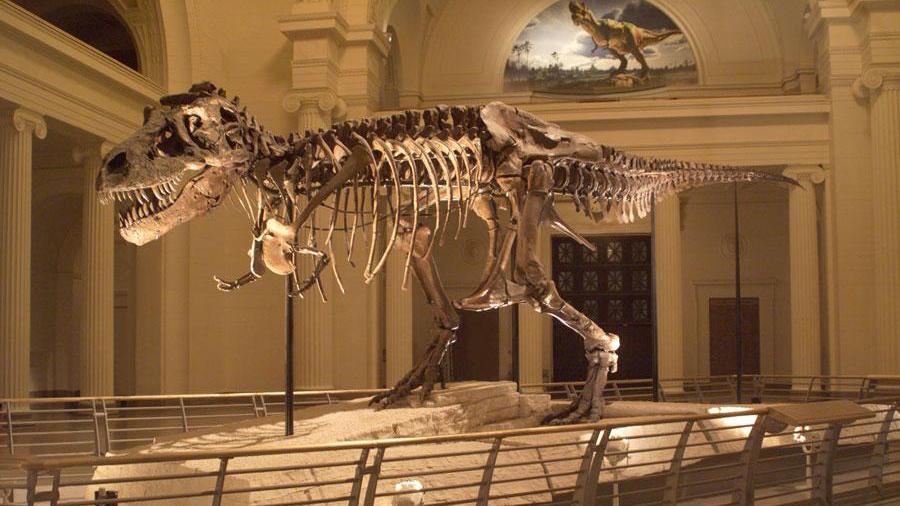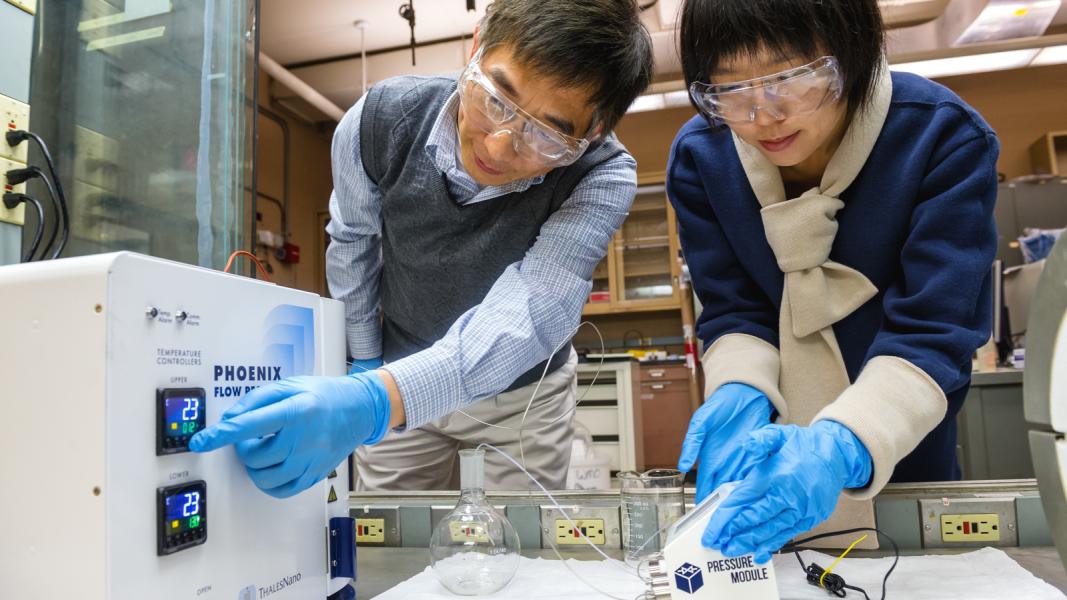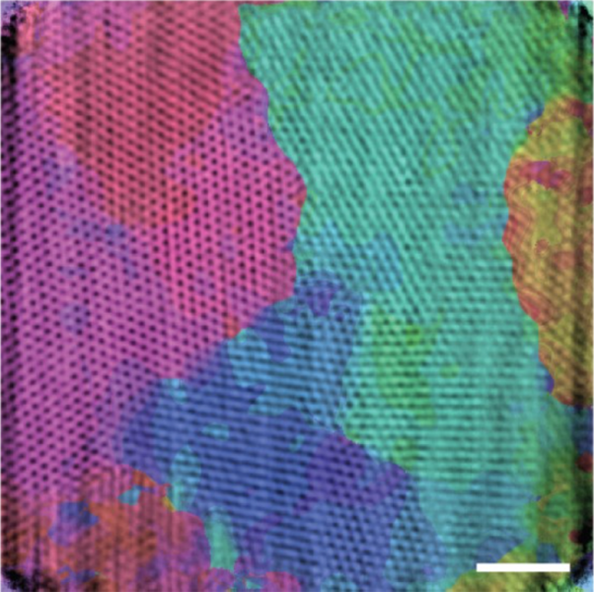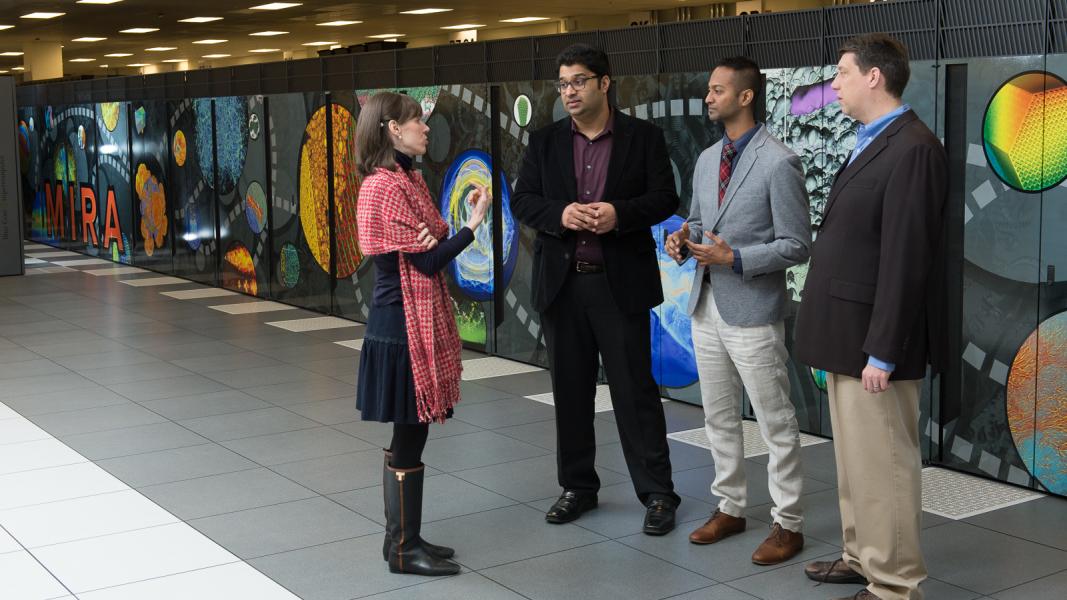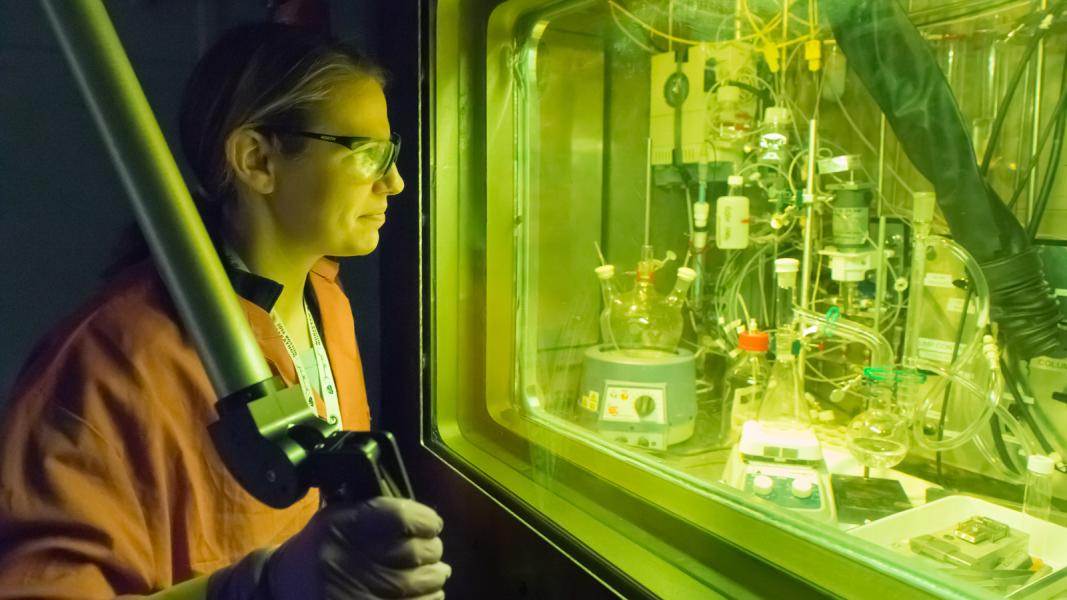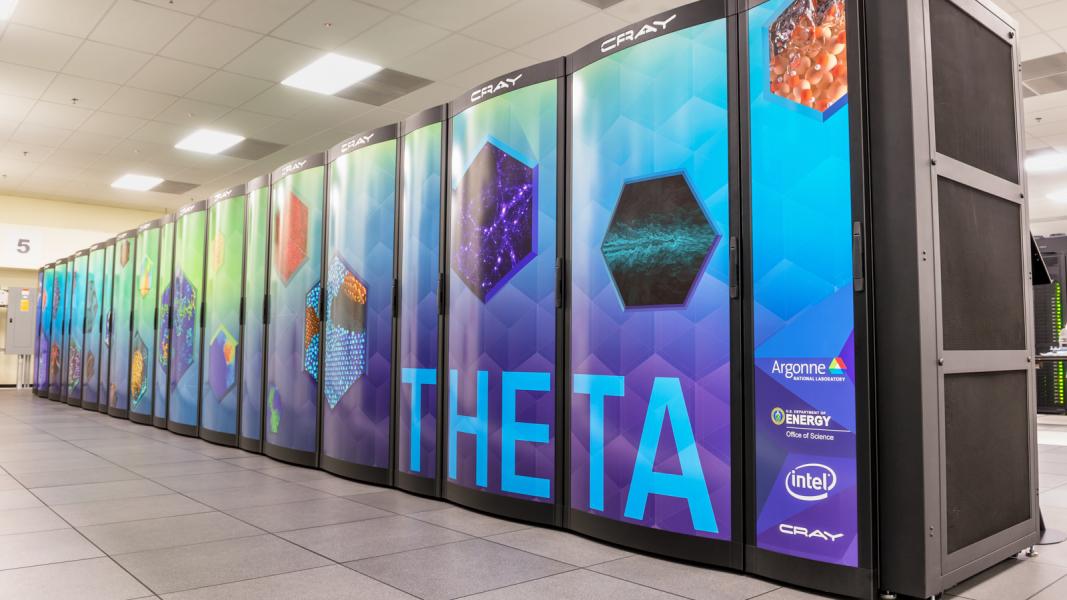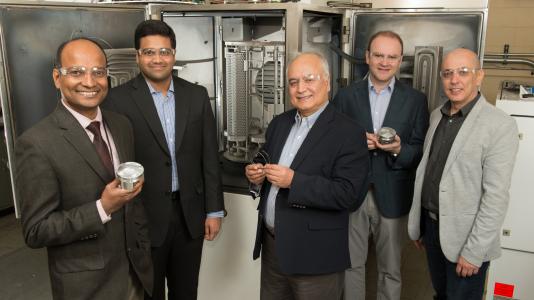
These discoveries are just a tiny sample of how Argonne researchers help address energy challenges, boost the economy through new discoveries and technologies and expand scientific knowledge.
In 2016, Argonne researchers:
Invented a diamond coating that heals itself as it’s worn away.
Inside an engine is a harsh place: the intense heat and pressure cause the parts to wear away and break down. But this new coating, which rebuilds itself as soon as it begins to break down, could protect engine parts (and more) for much longer. Read more
Got clues to why T. rex had such tiny arms.
In October, Field Museum scientists brought SUE the T. rex’s arm to Argonne, where powerful X-rays from the Advanced Photon Source, a U.S. Department of Energy (DOE) Office of Science User Facility, gave them a peek inside the holes left by the blood vessels and cells deep inside her arm—without damaging the fossil at all. It was the most detailed scan ever taken of SUE’s skeleton. Read more
Helped build sensors to give Chicago a “fitness tracker for a city.”
The Array of Things project installed its first 50 nodes across Chicago, which will yield data on pollution, traffic, weather, and more. This data can help city officials make changes to address flooding, traffic, and other urban challenges. Read more
Explored nanobubbles that block heat and sound from coming through windows.
A team of Argonne researchers developed a nanofoam that uses tiny gas bubbles to block heat and sound from coming through glass windows, while allowing visible light to pass through. The experimental glass could save billions of dollars a year in energy costs. Read more
Helped make an “artificial leaf” that turns carbon dioxide into fuel.
Just as plants use air and sunlight to make food, the “artificial leaf” pulls carbon dioxide out of the atmosphere to make fuel—all based on a chemical breakthrough that makes it cheaper and more efficient than previous systems. Read more
Saw the crystals in butterfly wings that scatter light to create color.
Scientists used the X-rays at the Advanced Photon Source to get a closer look at the wings of butterflies and discovered they are made up a patchwork of patterns and imperfections, which likely give the wings their brilliance. We could use this knowledge to make our own technology. Read more
Developed code to run 10,000 simultaneous engine simulations on Argonne’s Mira supercomputer.
The capability lets engineers virtually test and evaluate thousands of designs, weeding out the less promising and leaving behind only those with the most potential—greatly reducing development costs for newer, improved engines. Mira is one of the fastest supercomputers in the world and is part of the Argonne Leadership Computing Facility, a DOE Office of Science User Facility. Read more
Helped build accelerators that can make medical isotopes without highly enriched uranium.
Millions of people around the world have been helped by medical isotopes, used to diagnose and image cancer and other diseases. But the way we get them now is by creating them inside reactors using highly enriched uranium, which is a proliferation risk. Argonne is helping two companies develop an alternate method that uses accelerators instead. Read more
Stood up a new supercomputer that’s a bridge to the next big thing.
A new Intel/Cray machine called Theta will be a stepping-stone to get code and systems up to speed for Argonne’s next supercomputer, Aurora, a 200-petaflop giant due in 2018. Read more about the process of setting up a new supercomputer here.
Argonne National Laboratory seeks solutions to pressing national problems in science and technology. The nation’s first national laboratory, Argonne conducts leading-edge basic and applied scientific research in virtually every scientific discipline. Argonne researchers work closely with researchers from hundreds of companies, universities, and federal, state and municipal agencies to help them solve their specific problems, advance America’s scientific leadership and prepare the nation for a better future. With employees from more than 60 nations, Argonne is managed by UChicago Argonne, LLC for the U.S. Department of Energy’s Office of Science.
The U.S. Department of Energy’s Office of Science is the single largest supporter of basic research in the physical sciences in the United States and is working to address some of the most pressing challenges of our time. For more information, visit the Office of Science website.
2016 Science & Tech Stories
